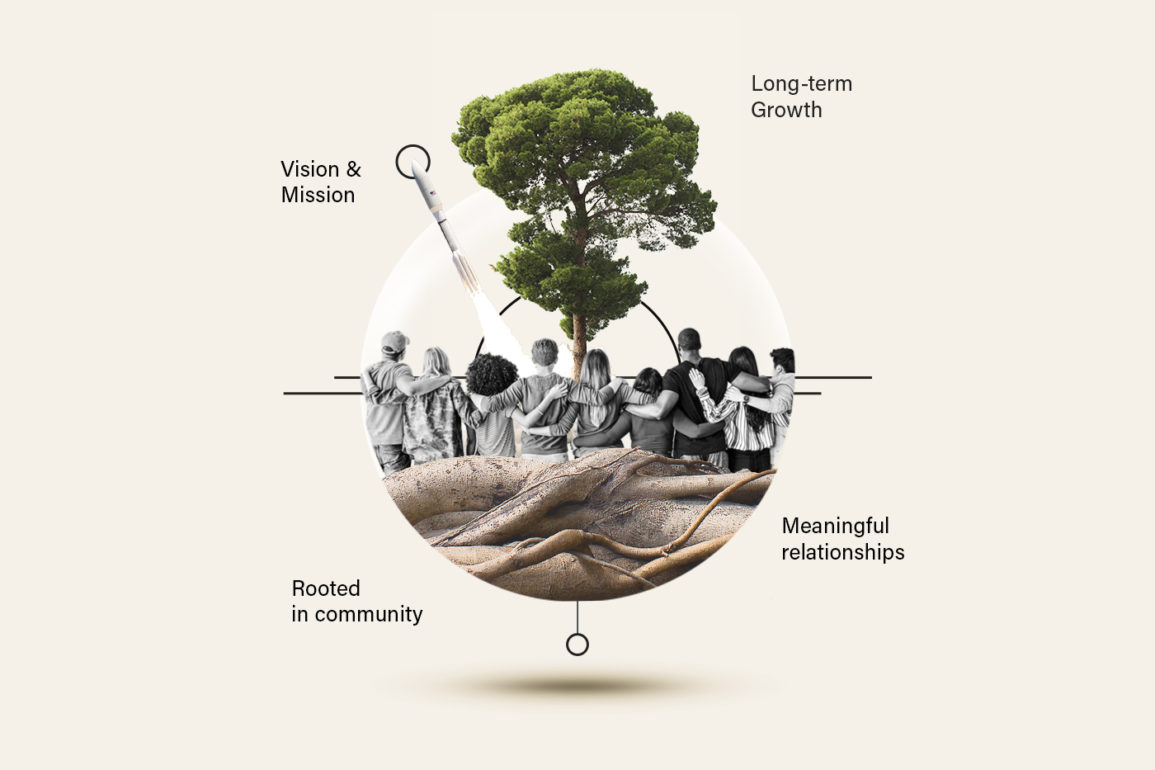Brand Purpose to Help You Outrank Competitors

If your business is interested in developing a content strategy that also communicates your intrinsic values, look no further. This article serves as a guide to connect the values that drive your operations to the value that earns you customers in a highly visible way that enables you to earn visibility online.
Our value-driven pillar content strategy can promote the success of initiatives for SEO, SEM, social media marketing, digital messaging, and overall brand lift. The approach combines a tested-and-proven pillar content approach with a values-first messaging strategy. Together, these efforts can effectively communicate to the communities that care most about your causes, while also helping you earn higher positions in search and suggestion algorithms.
Why Infuse Values in Your Content Strategy?
Every business owner is different in small ways, but lots of businesses seem the exact same from the point of view of a consumer. Whether talking about tech companies or B2B enterprise services, differentiation can be extremely difficult within crowded industry spaces.
Obtaining top-ranking positions on page one of Google can be even harder, particularly when you’re not sure what it is that makes you special as a company and how to articulate it. It’s likely that you have a product or service that lots of other people can offer. However, nearly every company has a unique set of values, and for that reason you have to understand the power of truly articulating what makes you special.
We at Consciously have figured out that these two problems of ranking and differentiation are, in many ways, one and the same. The solution — for businesses that want to truly stand out for the long term — is to connect the values of your brand to the value of your products and services. This strategy helps you position your business in a truly unique way that will be much more effective at enabling you to stand out.
What’s more, tying your values and value to a pillar-based marketing strategy can help you generate performance content that can drive up your ranking, all the way to the top spot. We’ve adapted the pillar-based marketing strategy proposed by top-performing platforms like Demand Jump to help our clients — and other businesses — think more consciously about what they stand for and how that comes across in their content and SEO strategies.
This guide will teach you the basics of pillar-based marketing and how to amplify that strategy with stakeholder-focused content that gets people noticing your unique value. With this approach, the things that make you different can not only help you cultivate goodwill among your most-important stakeholder communities, but also climb the ranks to get better positioning, more clicks, and more clients
What Is Pillar-Based Marketing?
Pillar-based marketing is a content marketing and SEO strategy that leverages the new and advanced ways Google indexes content on websites. The goal, for marketers, is to focus on a few core messages and to “own that space” with high-quality content, allowing you to rank better for certain search terms.
Of course, higher rankings mean increased qualified traffic and more leads — with the caveat that you have to deliberately attract the right audiences who are most likely to enter your funnel ecosystem. Research shows that when users click on search engine results, nearly 40% of search engine click on the first organic result, whereas a mere 18.4% click on #2. That number falls off even more quickly as reach the lower search engine results page (SERP) rankings, especially once you reach beyond page 1.
Importantly, though, clicks don’t always mean leads. If your content appeals to someone who is not likely to become a customer, then all the traffic in the world won’t increase sales or qualified leads.
Think About Audience Intent to Write Better Content That Ranks Higher
To ensure that you attract the right audiences, focus on what Google and top SEO marketing companies refer to as “intent”. In other words, think about the intent of the search and how that intent relates to someone who might enter your marketing funnel. For example, someone looking up how to tint their windows might be interested in a DIY product or a local service, whereas someone researching which models of the BMW 5 series carry the tint option might be researching the potential purchase of an entire new car.
Understanding the difference between these two intents can help your organization develop a more sophisticated SEO strategy that seeks to satisfy search users’ intents, rather than distract them with irrelevant offers.
Focusing on content pillars similarly allows you to think more strategically your core capabilities and the ways your business is most uniquely positioned to deliver.. You can then go all-in on helping satisfy the intent or goal of the search engine user by becoming a key source of needed information in your main subjects.
Why Use Pillar Based Marketing?
The obvious answer to the question “why should my business use content pillars?” is that doing so allows you to make bigger gains in a few areas without spreading yourself to thin.
There’s also a more technical answer, and it involves a bit about how Google’s search engine ranking algorithm works. Let’s quickly run through the history of how Google began to index content within pages as well as the content of the entire page itself.
2012: Google Begins Using Page Excerpts for Knowledge Boxes
It all starts with big changes that began to take root at Google Search around 2012. That year saw the introduction of the Google Knowledge Graph. Alongside the image carousel results, it was the first time Google fully committed to transforming the information search engine results into something beyond a simple list.
An example Knowledge Graph result for the brand Patagonia can be seen at right.
2013: Featured Snippets Showcase Important Page Information At-a-Glance
A year later, Google began introducing “featured snippets.” These results sat at the top of the organic SERPs and aimed to quickly provide the most-important information to search engine users. Organizations who obtained this privileged spot enjoyed not just a higher click-through rate (CTR) but also more brand visibility and prestige.
To power this new feature, Google began to index web pages a little differently. Instead of looking at the page as a whole to decide if it was worth ranking, the indexing algorithm began to also look at individual page sections. Organizations looking to boost their ranking and earn “snippets” spots had to then think about compartmentalizing the information on their page to answer questions more directly and quickly.
Around the same time, Google advanced its algorithm to register more complex “semantic” signals. The updated algorithm processed language similar to how a human reader might, looking for focus on specific subject areas and other semantic signals.
Gone were the days people hoping to rank could simply spam keywords at a certain density to earn rankings! From this point forward, Google would use its sophisticated algorithms to guess at how relevant the content might be to a search user based on context, grammar, organization, and even things like sentence length.
2021: Google Begins Ranking Passages Within Web Pages
Google’s “Passages” update in early 2021 amplified the strategy of breaking a page down into its core components. The company sought to get people closer to the information they needed more quickly, and doing that meant being able to jump to the perfect spot within content pages. From that point on, pages with high-quality passages were more likely to rank higher, especially if the overall page met a high standard of quality.
Rewinding back to content pillars: this SEO strategy recognizes that when content can focus on a specific topic and talk about it in a way that’s informative and highly valued, its passages can be pulled by Google’s index and ranked more prominently. Organizations can direct their content strategy to target intent across a wide swathe of subjects related to their area of expertise, all while relying upon a relatively simple and organized approach.
How Does Content Pillar Marketing Strategy Work?
Using a pillar content approach may result in a somewhat-complicated site navigation and content planning scheme, but the strategy itself is actually quite simple!
Take the following seven steps to get well on your way to producing great content with a focus on building authority (and strong linking signals) for your site.
- Determine the core subject matters and service areas your business or organization covers
2. Perform some SEO research to determine what search query topics are popular and that also crossover with your main areas of expertise
3. Select 3 – 5 (typically 4) content pillars to focus on. These form the backbone of your new SEO ranking strategy.
4. Write an extensive main page covering just about all of the basics of your pillar topic. We’re talking 3,000 or more words. This page will serve as your anchor page for you to direct internal links to.
5. Determine 8 – 20 or so sub-pillar topics directly related to the same query area. Write in-depth pages for each sub-topic, reaching 2,000 words or more. Each sub-pillar topic page should link back to the main pillar page.
6. Publish 1 – 3 dozen blogs of 750 words or more a month directly related to the main pillar or its sub topics.
7. Try to publish this content in batches, and provide each piece with a modest promotion budget of $50 or so dollars to achieve paid ranking for certain target demographics. This small budget will go a long way towards propelling those important early clicks!
Following these guidelines can not only help you produce focused content; it also ensures that your focus is on areas where you can quickly start to rank.
At Consciously, we encourage our clients to go a step further and not just talk about information that relates directly to client/customer queries. Instead, we help our clients unearth all of the core values that make them different to their competitors and that help them succeed among various stakeholders. Stakeholders include customers, employees, the media, investors, vendors/partners, suppliers, communities where you do business, and causes directly related to your area of business. By paying attention to the needs of each of these communities, you can direct your content strategy to connect with higher ideals that build loyalty towards your brand, while also helping you rank.
Why Include Your Values in a Pillar Content Marketing Strategy?
From a positioning standpoint you should include your values in every aspect of your marketing because when you consider that other companies sell the exact same things you do, thats the stuff that really matters.
It’s important for every business to make money, but if you want to make sure you can get the most revenue per transaction or have a steady stream of qualified buyers who stick with you in the long-term, you’ll want to show consistency in how you talk about your products and services and how you represent yourself within this arrangement.
As an example: a company that sources raw materials for its products from environmentally harmful suppliers and then puts them in non-recyclable packaging contributes to waste, pollution, and resource exploitation. Businesses who account for these factors can reduce the harm they cause while bringing more benefits to stakeholder communities: e.g. less litter for towns and cities, easier-to-recycle packaging for customers, and more business for suppliers who act more responsibly.
Practically speaking, tying your values to the value you offer can help you differentiate your brand and earn the respect of your stakeholders. Research shows that consumers are more loyal to brands that have prominent values as part of their overall business mission. These brands can also garner positive press and recognition, while avoiding the blowback that some brands can face when they fail to consider the ethicality of their business model.
Overall, placing values directly into your marketing strategy is good for business, it’s good for communities, it’s good for the planet, and it’s great for ranking.
How to Incorporate Values Into Content Pillars
There are three main angles an organization can use to begin sourcing ideas for value-driven content pillars:
- Work from your existing values, as determined by your founders, board, core executive team, partners, etc.
- Dig deep to determine the values you can (and do) follow through on a regular basis that can then be articulated regularly and signify not just who you are as a business but why you are driven to exist in the first place.
- Seek out stakeholder communities and listen for their needs, values and as well as what they value.
With these values and stakeholder insights in hand, speak to the topics that are most relevant to your mission as a business and the areas in which you strive to excel while also providing value to the communities you seek to serve in ways that are unique to you.
An example of what a values-driven pillar content strategy might look like can be seen below.
Don’t Shy Away From the Ways Other People Talk About Your Company
Many marketers might see the blog topics suggested in the left pillar category and have their eyes immediately roll back into their head, as dramatic operatic music plays. “Why,” they may ask, “would we ever talk about these hot button issues?”
The answer is that the audiences you seek to connect with are already talking about these issues, as is the community where your businesses are located and anyone who’s been paying attention to your space. Avoiding these topics does not mean your brand is avoiding being a part of these conversations. In fact, the less strategy you have to address these topic areas, the more likely you are to be caught off guard when you receive comments or a full-blown stories in the industry, or even a simple yet pointed inquiry from a client or employee
In addition to addressing hot issues through your content strategy, you can approach less-sensitive but also important topics. Your brand should always be prepared for the most-common concerns and criticisms that can be leveled at you from your stakeholder audiences — and the media that serves to help them participate in larger conversations. The best way to do this is by being engage with and part of that community.
We promise, too, that we’ve seen our own clients earn SERP ranking, earn social buzz, and earn respect by being forthcoming about main areas of concern in their industry. People are already talking about this stuff! By anticipating these conversations, you can seek to be a part of them and contribute your own perspective — rather than being the one talked about in the other room.
Modern Marketing Is No Longer Just Advertising: It’s Participating in a Global Conversation
Having a thoughtful brand also serves to help differentiate your business from competitors content to who sweep things under the rug and seek out “business as usual.”
Values-driven branding strategies have already emerged as a key differentiator in a more socially conscious and vocal society. Bruce Cazenave of BlueStem brands predicts that when people are faced with a choice of three nearly indistinct brands, they’ll ask “which resonates with me more?”
“Customers instinctively gravitate towards businesses they want to feel associated with because they are, say, more environmental, or are more public about their commitment to inclusion,” Cazenave reflects. “Build a community around that, and people will help you build your brand.”
Conclusion: Embrace Pillar Content Marketing, and Let Your Values Drive the Conversations About Your Brand (Not the Other Way Around)
Our method is all about helping brands connect the values they uphold to the value the offer to customers, investors, communities, employees, and other stakeholders. We have a unique understanding that everything is connected; to ignore this fact is to try to conduct business in a 20th century mindset. We call it a business ecosystem for a reason! Failing to meet the needs of the entire ecosystem is unsustainable for your business in the long run. You risk becoming extinct.
Information moves too fast and is way far outside of your brand’s control in the 21st century. Brands that stand the best chance of establishing a positive rapport with the public (and their own internal stakeholders) have a healthy and full self-aware understanding of where they stand within their industry.
Further, we understand more than ever how issues like equity among employee hiring and sustainable practices in every aspect of business tend to affect the world at large. When we go through things without thinking them through, bad things happen. And, just as importantly, the connection we seek to have with the communities we serve gets severed. By staying connected with your business value(s), you separate yourself from the pack and ensure that your business or organization provides genuine value to everyone.
Consider this food for thought as you develop your own content pillars and seek to rank both in search and in your communities minds. For case studies on how this works or more examples, visit https://consciouslyinc.com/canon/category/case-study/. You can also reach out with questions or a consultation request by visiting our contact page.













